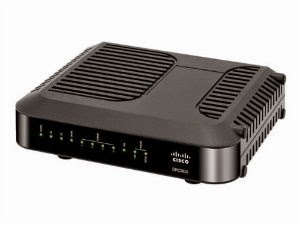Cisco Router Configuration Tutorial

Cisco Inter-network Operating System:
Cisco IOS Modes of Operation
The
Cisco IOS software provides access to several different command modes.
Each command mode provides a different group of related commands.
For security purposes, the Cisco IOS software provides two levels of access to
commands: user and privileged. The unprivileged user mode is called user EXEC
mode. The privileged mode is called privileged EXEC mode and requires a
password. The commands available in user EXEC mode are a subset of the
commands available in privileged EXEC mode.
The following table describes some of the most commonly used modes, how to
enter the modes, and the resulting prompts. The prompt helps you identify which
mode you are in and, therefore, which commands are available to you
Mode of
Operation
Usage
How to Enter the
Mode
Prompt
User EXEC
Change terminal
settings on a temporary
basis, perform basic
tests, and list system
information.
First level accessed.
Router>
Privileged EXEC
System administration,
set operating
parameters.
From user EXEC
mode, enter enable
password command
Router#
Global Config
Modify configuration that
affect the system as a
whole.
From privileged
EXEC, enter
configure terminal.
Router(config)#
Interface Config
Modify the operation of
an interface.
From global mode,
enter interface type
number.
Router(config-if)#
Setup
Create the initial
configuration.
From privileged EXEC
mode, enter
command setup.
Prompted dialog
User EXEC Mode:
When you are connected to the router, you are started in user EXEC mode. The
user EXEC commands are a subset of the privileged EXEC commands.
Privileged EXEC Mode:
Privileged commands include the following:
• Configure – Changes the software configuration.
• Debug – Display process and hardware event messages.
• Setup – Enter configuration information at the prompts.
Enter the command disable to exit from the privileged EXEC mode and return to
user EXEC mode.
Configuration Mode
Configuration mode has a set of submodes that you use for modifying interface
settings, routing protocol settings, line settings, and so forth. Use caution with
configuration mode because all changes you enter take effect immediately.
To enter configuration mode, enter the command configure terminal and exit by
pressing Ctrl-Z.
Note:
Almost every configuration command also has a no form. In general, use the no
form to disable a feature or function. Use the command without the keyword no
to re-enable a disabled feature or to enable a feature that is disabled by default.
For example, IP routing is enabled by default. To disable IP routing, enter the no
ip routing command and enter ip routing to re-enable it.
Getting Help
In any command mode, you can get a list of available commands by entering a
question mark (?).
Router>?
To obtain a list of commands that begin with a particular character sequence,
type in those characters followed immediately by the question mark (?).
Router#co?
configure connect copy
To list keywords or arguments, enter a question mark in place of a keyword or
argument. Include a space before the question mark.
Router#configure ?
memory Configure from NV memory
network Configure from a TFTP network host
terminal Configure from the terminal
You can also abbreviate commands and keywords by entering just enough
characters to make the command unique from other commands. For example,
you can abbreviate the show command to sh.
Configuration Files
Any time you make changes to the router configuration, you must save the
changes to memory because if you do not they will be lost if there is a system
reload or power outage. There are two types of configuration files: the running
(current operating) configuration and the startup configuration.
Use the following privileged mode commands to work with configuration files.
• configure terminal – modify the running configuration manually
from the terminal.
• show running-config – display the running configuration.
• show startup-config – display the startup configuration.
• copy running-config startup-config – copy the running
configuration to the startup configuration.
• copy startup-config running-config – copy the startup
configuration to the running configuration.
• erase startup-config – erase the startup-configuration in NVRAM.
• copy tftp running-config – load a configuration file stored on a
Trivial File Transfer Protocol (TFTP) server into the running
configuration.
• copy running-config tftp – store the running configuration on a
TFTP server.
IP Address Configuration
Take the following steps to configure the IP address of an interface.
Step 1: Enter privileged EXEC mode:
Router>enable password
Step 2: Enter the configure terminal command to enter global configuration
mode.
Router#config terminal
Step 3: Enter the interface type slot/port (for Cisco 7000 series) or interface
type port (for Cisco 2500 series) to enter the interface configuration mode.
Example:
Router (config)#interface ethernet 0/1
Step 4: Enter the IP address and subnet mask of the interface using the ip
address ipaddress subnetmask command.
Example,
Router (config-if)#ip address 192.168.10.1 255.255.255.0
Step 5: Exit the configuration mode by pressing Ctrl-Z
Router(config-if)#[Ctrl-Z]
Routing Protocol Configuration
Routing Information Protocol (RIP)
Step 1: Enter privileged EXEC mode:
Router>enable password
Step 2: Enter the configure terminal command to enter global configuration
mode.
Router#config terminal
Step 3: Enter the router rip command
Router(config)#router rip
Step 4: Add the network number to use RIP and repeat this step for all the
numbers.
Router(config-router)#network network-number
Example: Router(config-router)#network 192.168.10.0
Note: To turn off RIP, use the no router rip command.
Router(config)#no router rip
Other useful commands
• Specify a RIP Version
By default, the software receives RIP version 1 and version 2 packets, but sends
only version 1 packets. To control which RIP version an interface sends, use one
of the following commands in interface configuration mode:
Command
Purpose
ip rip send version 1
Configure an interface to send only RIP
version 1 packets.
ip rip send version 2
Configure an interface to send only RIP
version 2 packets.
ip rip send version 1
2
Configure an interface to send only RIP
version 1 and version 2 packets.
To control how packets received from an interface are processed, use one of the
following commands:
Command
Purpose
ip rip receive version 1
Configure an interface to accept only
RIP version 1 packets.
ip rip receive version 2
Configure an interface to accept only
RIP version 2 packets
ip rip receive version 1
2
Configure an interface to accept only
RIP version 1 or 2 packets.
• Enable or Disable Split Horizon
Use one of the following commands in interface configuration mode:
Command
Purpose
ip split-horizon
Enable split horizon.
no ip split-horizon
Disable split horizon.
Open Shortest Path First (OSPF)
Step 1: Enter privileged EXEC mode:
Router>enable password
Step 2: Enter the configure terminal command to enter global configuration
mode.
Router#config terminal
Step 3: Enter the router ospf command and follow by the process-id.
Router(config)#router ospf process-id
Pick the process-id which is not being used. To determine what ids
are being used, issue the show process command.
Router(config)#show process
Step 4: Add the network number, mask and area-id
Router(config-router)#network network-number mask area area-id
The network-number identifies the network using OSPF. The mask tells which
bits to use from the network-number, and the area-id is used for determining
areas in an OSPF configuration.
Example:
Router(config-router)#network 192.168.10.0 255.255.255.0 area
0.0.0.0
Repeat this step for all the network numbers.
To turn off OSPF, use the following command.
Router(config)#no router ospf process-id
Other useful commands
• Configure OSPF Interface Parameters
You are not required to alter any of these parameters, but some interface
parameters must be consistent across all routers in an attached network.
In interface configuration mode, specify any of the following:
Command
Purpose
ip ospf cost cost
Explicitly specify the cost of sending a
packet on an OSPF interface.
ip ospf retransmit-interval
seconds
Specify the number of seconds between
link state advertisement retransmissions
for adjacencies belonging to an OSPF
interface.
ip ospf transmit-delay
seconds
Set the estimated number of seconds it
takes to transmit a link state update
packet on an OSPF interface.
ip ospf priority number
Set router priority to help determine the
OSPF designated router for a network.
ip ospf hello-interval
seconds
Specify the length of time, in seconds,
between the hello packets that a router
sends on an OSPF interface.
ip ospf dead-interval
seconds
Set the number of seconds that a
router’s hello packets must not have
been seen before its neighbors declare
the OSPF router down.
ip ospf authentication-key
password
Assign a specific password to be used
by neighboring OSPF routers on a
network segment that is using OSPF’s
simple password authentication.
Interior Gateway Routing Protocol (IGRP)
• Create the IGRP Routing Process
To create the IGRP routing process, use the following required commands
starting in global configuration mode.
Step
Command
Purpose
1
router igrp
autonomous-system
Enable an IGRP routing process, which
place you in router configuration mode.
2
network network-
number
Associate networks with an IGRP
routing process.
• Disable Holddown
The holddown mechanism is used to help avoid routing loop in the network, but
has the effect of increasing the topology convergence time.
To disable holddowns with IGRP, use the following command in router
configuration mode. All devices in an IGRP autonomous system must be
consistent in their use of holddowns.
Command
Purpose
No metric holddown
Disable the IGRP holddown
period.
• Enforce a Maximum Network Diameter
Define a maximum diameter to the IGRP network. Routes whose hop counts
exceed this diameter are not advertised. The default maximum diameter is 100
hops. The maximum diameter is 255 hops.
Use the following command in router configuration mode.
Command
Purpose
metric maximum-hops
hops
Configure the maximum network
diameter.
• To turn off IGRP, use the following command.
Router(config)#no router igrp autonomous-system
Border Gateway Protocol (BGP)
• Enable BGP Routing
Use the following commands in global configuration mode.
Step
Command
Purpose
1
router bgp autonomous-
system
Enable a BGP routing
process, which places you in
router configuration mode.
2
network network-number
[mask network-mask] [route-
map route-map-name]
Flag a network as local to this
autonomous system and enter
it to the BGP table.
• Configure BGP Neighbors
BGP must completely understand the relationships it has with its neighbors.
Command
Purpose
neighbor {ip-address | peer-
group-name} remote-as number
Specify a BGP neighbor.
• Reset BGP Connections
Use either of the following commands in EXEC mode to reset BGP connections
Command
Purpose
clear ip bgp address
Reset a particular BGP
connection.
clear ip bgp *
Reset all BGP connections.
• To turn off BGP, use the following command.
Router(config)#no router bgp autonomous-system
How to read router/link status
Status of router and links can be easily determined by power LED of router and
link LED of each interface (if any). However, you may find a transceiver
connected to an AUI port looks like the following:
When this transceiver is correctly connected, the “POWER” LED should light.
Similarly, the “LINK” and “POLARITY” LEDs should light when you inserted the
cable into the RJ45 socket on the transceiver. (Note that to get this result; the
other end of the cable should be connected to some other devices as well.) If
these LEDs are not light, you probably have problems with the link (cable).


